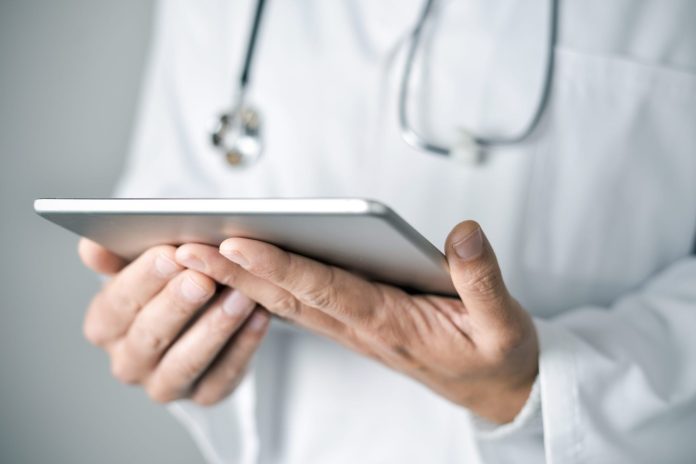Kajeet: Extending connected healthcare into homes without the internet is impossible
For more on the state of connected healthcare, download this free report.
Kajeet is perhaps best known as a mobile virtual network operator and MVNO enabler. The company was founded on a core mission of making connections for good. As Director of Strategy and Business Development Dominic Marcellino explained, this core mission has evolved from making the internet safe for kids to include bridging the digital divide, closing the homework gap and enabling connected healthcare.
Q: Can you give me some background on how Kajeet has evolved and expanded over the years while maintaining focus on the company’s core goal?
A: Kajeet was founded 18 years ago by three dads who had 16 kids among them and were thinking about, at that point, making cell phones safe for kids to use. That evolved into how to make the internet safe, reliable, and useful to students and bridging the digital divide.The company ended up building out a really robust technical capability first as an [MVNO] then as a [MVNO] enabler. We ended up creating a bunch of capabilities that cut across our core products. Last year, we saw rapid growth; we had 5x growth of enterprise, 20x growth of education.
We have recognized the need to continue to support the customers we have and tried to do a little pattern recognition of our successful customers–what is Kajeet doing and is there a way to leverage our ability and do repeatable customer engagements. We began engaging further than providing the connectivity and platform. We were involved in device procurement, device onboarding, managing device profiles, and providing after-deployment support, and basic device troubleshooting.
The next evolution for us is in healthcare. It’s about taking the core pieces, expanding out, and engaging with healthcare device manufacturing companies and pitching ourselves as their connectivity partner. Our core mission is connections for good. We really like being engaged in businesses that are helping people. We want to be engaged where that’s what’s happening.
Q: Can you expand on how Kajeet is positioning itself in the healthcare space and what you see happening more long-term?
A: Our healthcare position is going to be to continue to be an enablement company. We’re not going to go build new medical devices. We’re not going to build a bespoke healthcare platform. We are partnering with companies that are offering those products or platforms to pull together fuller solutions. When someone has a specific need in the healthcare space, we’ll serve as a systems integrator, a solutions company—we’ll go get all the pieces together. We’re also offering consultative assistance to new product manufacturers as they go through the product certification process. Our team has broad experience to bring to bear to help them.
Healthcare was a big driver and it’s the core vertical focus we have right now. Ideally what we do is spin it off sort of like education and have business units that are vertically-focused. The stickiness of telehealth, it’s a tricky one. Look at the learnings that came out of New York [schools] that there will no longer be snow days. We know that you can learn that day…I think that that tells us the learnings are basically this is supportable, there’s no reason to have a day off for learning when you have access to it.
For healthcare, there are great reasons for people that are in recovery to not get in a car and be seen [in person]; good reasons for people with specific symptoms to not come into a place. There are things best done in person and things that can be done in a connected way. Anecdotally, I think behavioral health will end up being the big one. I think you’ll see strong uptake and more prevalence of connected behavioral health.
Q: What is Kajeet doing to support remote patient monitoring and how does ease-of-use impact rate of adoption?
A: Remote patient monitoring depends on how do I get this data from a diverse set of devices, make sure it gets where it’s supposed to go securely and reliably, and the operation and functioning of a diverse set of devices. We’re going to provide the hardware and make this process as easy as we can for our users. We’re going to send you a device…All you have to do is show up, charge your phone, hit a link. I would prefer you to not have to engage with an interface you’ve never seen before to connect. I’m sending out an electronic cuff or a thermometer and a hub that sends the data. There are some really cool companies that have done a great job manufacturing all the pieces. I’ll have an agent live on a hub that can ingest any kind of identifiable data and aggregate and send it securely.
It is going to allow for much real time synchronous engagement. You’ll see improvements in overall care. There’s no reason to wait for someone who feels bad to come in.
Q: The premise of connected healthcare assumes the patient has access to connectivity but we know that’s not universally the case. How do you think about that misalignment?
A: On the healthcare side, last year exposed significant differences in access to the internet that I think is actually going to be an opportunity to address and solve the issue or it’s going to become a bigger challenge. Extending telehealth and remote patient monitoring into homes without the internet is impossible. The equity piece is critical for this to be the future of healthcare. If there are better ways to do that by leveraging technology, that’s a world where publicly-interested companies, governments and providers have a way to do this. If the internet is where care is happening, and you don’t have access to the internet, that’s not equitable. And there are going to be tough conversations around that.

